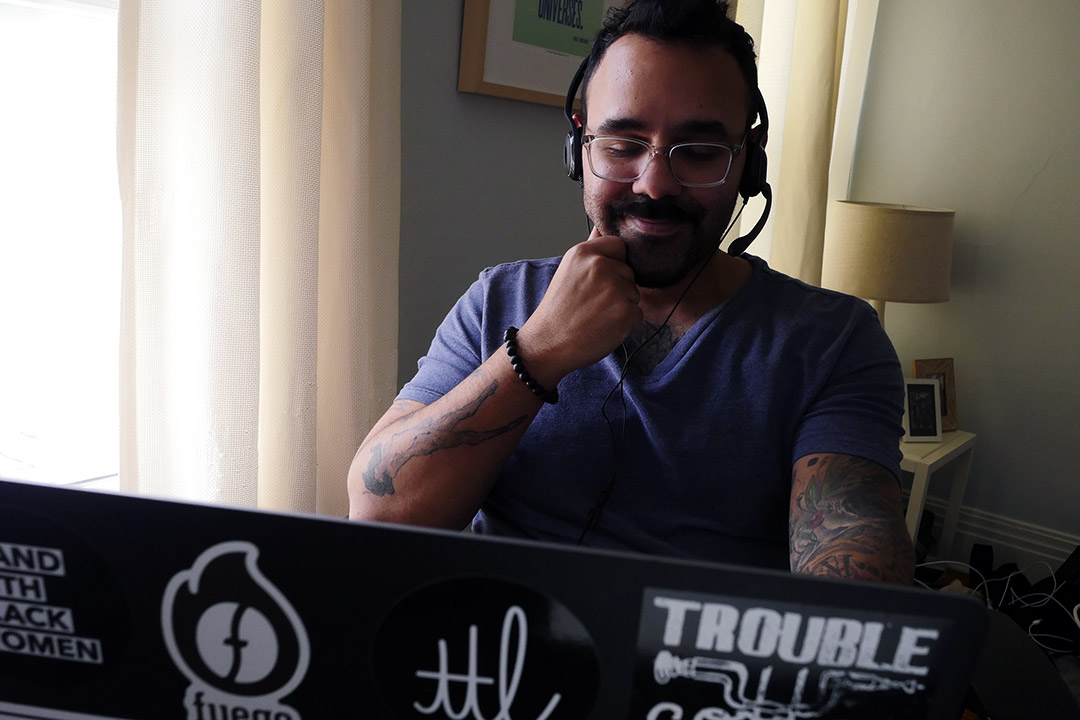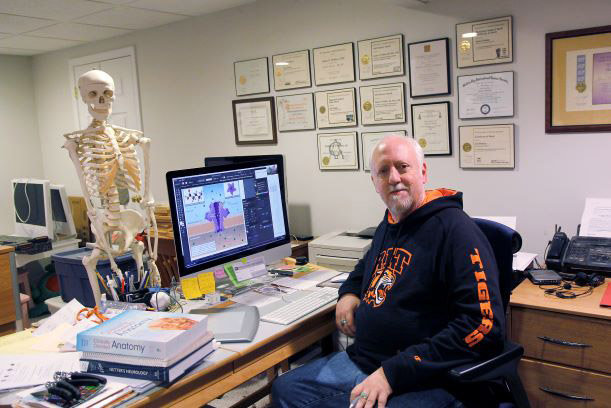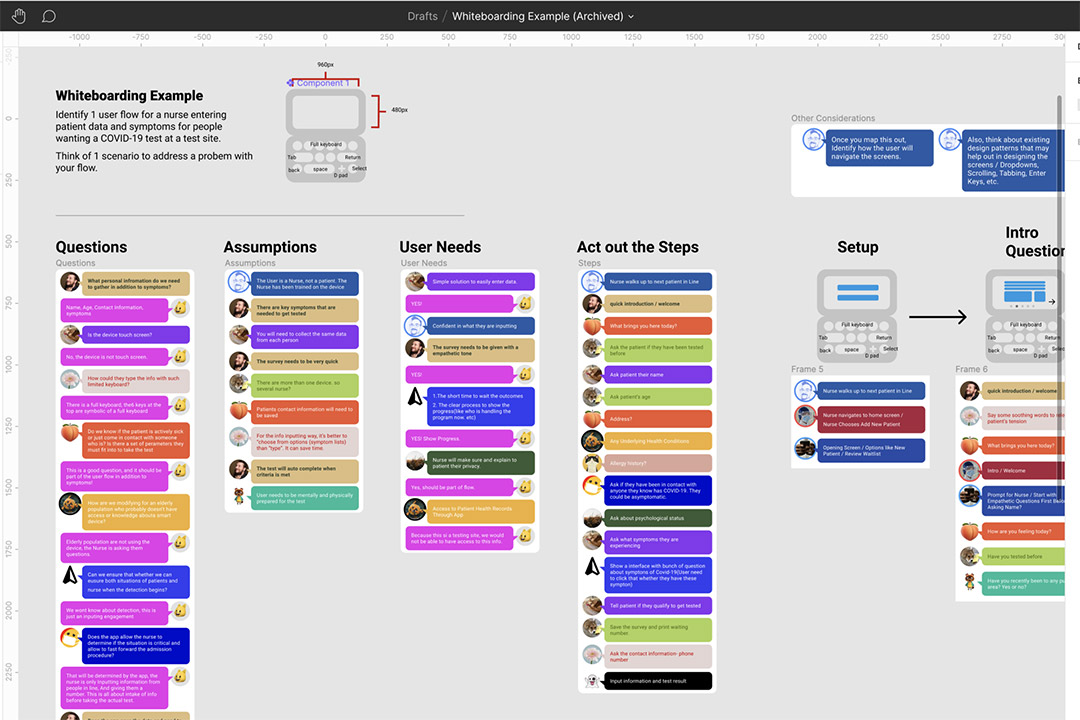RIT faculty gearing up to apply spring learnings to fall classes
Professors ready to keep academic momentum moving forward
Miguel Cardona, assistant professor in the College of Art and Design, credited success in the spring to successfully utilizing “collaborative documents.”
The unexpected transition to remote learning during the spring semester challenged faculty across RIT to experiment, create, and deploy new methods of instruction to ensure student success.
As the university gears up for in-person and online classes—or a combination of both—faculty members are applying a wide range of lessons learned from the spring to keep academic momentum moving forward in the fall.
“While we learned a tremendous amount from the successes and challenges of the transition to remote learning in the spring, preparations and execution for fall present a different challenge,” said Todd Jokl, dean of the College of Art and Design. “In particular, when you plan from the outset of the semester for the various methods of in-person, blended, and online classes, the approach must be quite different.
“Faculty are spending their summers developing new content that enables them to deliver pertinent material online so that in-class/lab/studio time can then focus on the execution of ideas engaged through course materials—while still maintaining safe health behaviors like physical distancing,” he added.
A different fall
“Things should be quite different this fall,” observed James Perkins ’92 MFA (medical illustration) Distinguished Professor and graduate director, medical illustration program, in the College of Health Sciences and Technology. “For my anatomy class, all lectures will be entirely online, as they were in the spring. The lab still presents a bit of a challenge, but not like last spring. To accommodate social distancing, the capacity of the cadaver lab has been reduced from 24 to 12, meaning I can only put half the class in there at a time.”
To accommodate physical distancing in the fall, James Perkins, Distinguished Professor and graduate director in the medical illustration program, said the capacity of the cadaver lab for his anatomy class has been reduced from 24 to 12, meaning he’ll have to split up the class.
“The lab is very intense, meeting three days a week for three hours each day,” he noted. “The plan is to have half the class dissect for the first one-and-a-half hours each day, then they’ll leave and the other half of the class will dissect for the remaining hour and a half. This way every student gets to participate in dissection of each region of the body. In addition to the reduced capacity of the lab, students will also be wearing enhanced PPE (personal protective equipment). They already wear gloves and lab coasts for dissection. But now everyone in the lab will wear gloves, a surgical gown, mask, and plastic face shield.”
Collaborative documents
Miguel Cardona, assistant professor in new media design and visual communications design MFA in the College of Art and Design, credited success in the spring to successfully utilizing “collaborative documents” with his 36 students in two sections of interactive design and a four-student research team.
“Making creative use of Figma, a collaborative design tool, as a virtual working space and chat capabilities was my lifesaver,” he said. “It’s like Google Docs, with the power of Photoshop and Illustrator, where 50 of us can design online at the same time. With Figma, I can see their mouse cursors moving about, and following me as I perform design tutorials, or as they work through an assigned lab.”
Miguel Cardona, assistant professor in the College of Art and Design, uses the software Figma, a collaborative design tool.
Cardona noted that “working with a lot of these newer collaborative, online technologies allowed me to have measurable engagement, giving me insights as to who was being active and who may be falling behind.”
For asynchronous activities, the assistant professor used Dropbox Paper for students to post and give feedback on each other’s work, enabling him to measure responses and “retain the artifacts of the students’ work paired with their peer feedback.”
“I was very flexible with due dates, and made sure to do a lot of wellbeing check-ins,” he recalled. “What mattered most is that they saw me working with them. I didn’t just assign tasks; I was an active participant and I think that that was my key takeaway. They put in the effort because they saw my effort, and I tried to make it as fun as possible.”
Flipping the classroom
For Sandra Connelly, a principal lecturer in the Thomas H. Gosnell School of Life Sciences in the College of Science, the primary challenge for her online general biology course is its size. What does it look like to require participation in an online course with 400-plus students? How does a professor convey information to students and get responses—either synchronously or asynchronously?
“This is not something you can handle in a Zoom room for 30 minutes once a week,” mused Connelly, who is serving as director of the College Course Advancement Team (CATs), a cohort of RIT faculty from each college who work with their colleagues to design implementation and pedagogy strategies specific to their discipline for the fall classroom spaces (in person or online).
A number of the options implemented by Connelly and her colleagues involved the “flipped classroom,” including replacing a traditional final with a “signature assignment”—low-stakes work throughout the semester that builds up to a final project.
“For my class it centered around thinking like a scientist—building out ideas in written, oral, and expressive ways,” she said. “These projects are far more telling of knowledge gain and you can see the transformation in the students’ work over the course of the semester. This has translated very well to online and has allowed us to do things like online presentation sessions and group feedback on work—something that is actually harder to do in-person than online.”
This fall, Connelly noted, will see the addition of more “slightly off-topic” videos that she is making to help her students draw new connections. “They will be working with a statistical software package to manipulate big data and explore global environmental and health changes, and they will spend time producing whole class reflection pieces on topics through the use of online white board and note-based spaces. It will be a busy semester for sure.”
“Elvis” in the house
Don Figer, director of RIT’s Future Photon Initiative and the Center for Detectors, said it is important to introduce a bit of levity when it comes to online learning. “One of my first principles is to ensure that the students are in a condition conducive to learning … not full of anxiety,” Figer recalled.
Among the “icebreakers” the College of Science professor employed for the 34 students in his university astronomy class were “light-hearted performances” at the beginning of each lecture, including Figer impersonating Elvis Presley and Mr. Rogers.
“I wanted the students to feel that they had some ‘control’ in a world in which it seemed that they had lost it,” Figer said. “I even let them choose the introductory songs I would play approximately five minutes before each lecture; many students even logged on early to hear those songs.”
Keeping students engaged
Incorporating synchronous content into a largely asynchronous class is among the best practices that Steven Carnovale strived to achieve for his students in Saunders College of Business. The assistant professor plans to offer a live streaming version of his supply chain management/operations and supply chain management class on Zoom this fall that will be made available later as a recording.
“It’s important to hold live office hours and send out regular messages to students, letting them know I’ve been following their posts, or if there is an interesting story that may be relevant to the class,” he added. “In addition, weekly ‘touch base’ video meetings can be helpful as well; anything to keep students engaged.”
“We’ve heard from students—both from the spring semester, and those preparing for fall—that one of their main priorities with remote learning is to be able to connect and engage with faculty consistently and meaningfully,” agreed Thérèse Hannigan, director, RIT Online, and associate professor in the College of Art and Design. “A robust learning experience goes beyond content delivery, and is a social, relational experience. Faculty are responding, and we are collaborating with them to find creative ways—translating their strengths in the classroom to the online environment—to create a rich and interactive online class community.”











